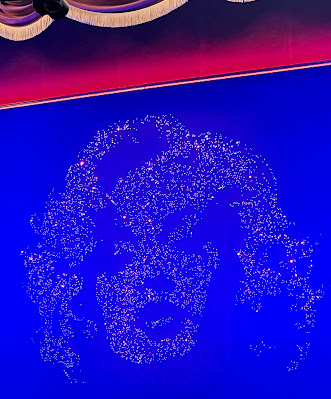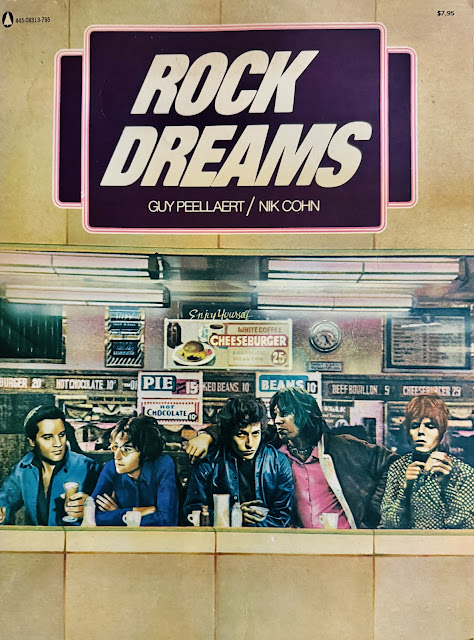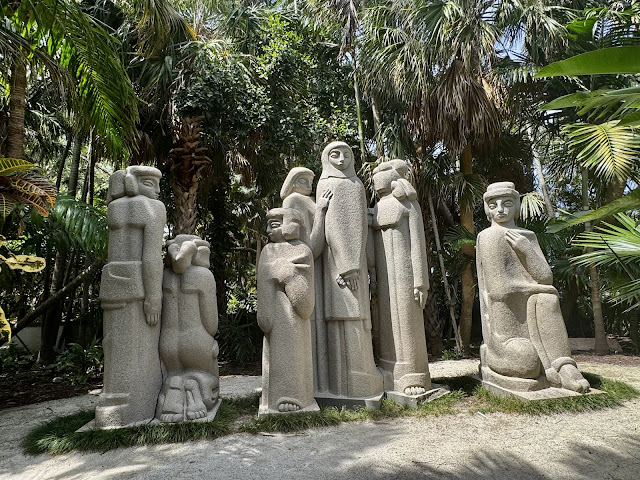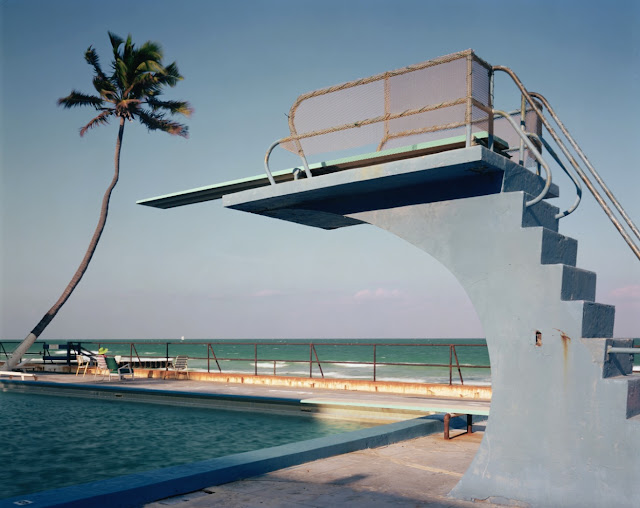I wonder if
Matthew Winston, who taught a course on black humor at
Columbia early in his academic career, read
The Sympathizer, Viet Thanh Nguyen's prequel to
The Committed, before he died in 2020? Both books--really an enormous, two-part novel--would have been right at home on his memorable reading list, which included works by
Vladimir Nabokov and
William Burroughs as well as
Louis-Ferdinand Céline,
Eugène Ionesco and
Alfred Jarry.
However, this bravura passage in
The Committed--one of dozens--surely would have given Winston who published
an essay on the genre in 1978 that credited
André Breton, another Frenchman, for naming the genre, pause.
And who is the scriptwriter but you? Still, as the person penning this scenario, you are only partly in control, for you are not the producer of what is clearly a black comedy, even if calling a comedy black is kind of, sort of, maybe, perhaps, residually racist, although if you suggested that to a Frenchman, or even to an American, and most probably to a Vietnamese, he would indignantly denounce you as racist for seeing something racial in an innocent use of the word “black.” Just a coincidence! Nothing to do with black markets, or blackface, or how the French, in a really wonderful turn of phrase, call ghostwriters nègres—niggers!—the sheer bravado of it taking your breath away when you heard it for the first time. But why take offense over a playful use of words, when it really was the case that ghostwriters were just slaves, minus the whipping, raping, lynching, lifetime servitude, and free labor? Still—what the hell?—if words are just words, then let’s call it a white comedy, shall we? It’s just a joke, take it easy, a bad joke, sure, but so was the Unholy Trinity of colonialism, slavery, and genocide, not to mention the Dynamic Duo of capitalism and communism, both of which white people invented and which were contagious, like smallpox and syphilis.
To the best of my recollection, the Brooklyn-born Winston, who was active in the civil rights movement and ended up teaching at the University of Alabama for nearly 25 years, never questioned Breton's color choice. And that omission alone says everything about how much more interesting literature has gotten in the 21st century with the inclusion of so many different voices in a newly emerging canon of great works.
Not that Nguyen exempts his own culture from equally merciless examination in an expansive novel that ultimately refuses to take sides, in the sense that while no value system is spared, none is entirely villainized either, except perhaps post-revolutionary governments whose primary objective becomes clinging to power.
Although I did not say so out loud, I wondered if perhaps authentic Vietnamese culture should also include gambling, which we taught to our children during Tet celebrations and then wondered why we had a predilection for gambling as adults; or smoking and drinking coffee in cafés, for which, if there were an Olympic competition for such a sport, we Vietnamese men would be gold medal contenders, for we treated these cafés, inherited from the French, as second homes away from abrasive wives and pesky children; or drinking beer, cognac, and wine (preferably of the native rice kind) until we reached the doorway to oblivion, whereon some of us beat the aforementioned wives and children or each other; or getting a good deal, even at the expense of our customers or our merchants or our principles, and then being outraged when we ourselves were cheated; or gossiping about our friends and relatives, whom we loved to backstab even more than stabbing our enemies, whose backs were harder to reach; or taking pride in the accomplishments of our neighbors and countrymen, until they accomplished too much, whereupon we resented them and waited for the sweet opportunity to gleefully witness their downfall; or making the women stay in the kitchen and serve the men, or expecting said women to reproduce at least six or seven times, and hopefully more, until their uteruses were as dusty as the Sahara—all aspects of our culture we performed much more frequently than a fan dance, or singing a snatch of opera or folk song, or wearing a silk gown, or reenacting a courtship ritual in the rice paddies, which only ever happened once in a lifetime, if at all, and if it did, likely involved scraping off the buffalo dung encrusted between our toes and swatting away the squadrons of dive-bombing mosquitoes.
The motormouth narrator, who can't be killed by a bullet because he remains nameless (unlucky him!), has fled to France after he and his blood brother, Bon, a stone-cold south Vietnamese killer with good reason, have been released from a north Vietnamese re-education camp, administered by Man, their third blood brother whose face has been burned off by American napalm, rendering him unrecognizable to Bon if not the narrator, the former sympathizer. This trio--two true believers and a skeptic who can see both sides of everything--enables Nguyen to explore a complex web of themes including friendship, colonialism, religion, communism, sexism, capitalism and expatriatism with an incredible facility for apt metaphor.
The Vietnamese who came to France and did not feel at home returned to Vietnam to fight for the revolution or were deported by the French who suspected them of not being French enough. These were the Vietnamese who believed so sincerely in liberty, equality, and fraternity that they did not see the parentheses, which the French used in place of hyphens: “liberty, equality, and fraternity (but just not yet, at least for you).” Flabbergasted, these revolutionaries became the indigestible Vietnamese, the ones who could not swallow France and who could not be swallowed. As for the Vietnamese who stayed in France, French culture had chewed on them since they were in Vietnam. By the time they came to France, they were already, like certain species of cheese, quite soft and easily digestible, qualities inherited by their ideologically pasteurized children.
Absolutely nothing is sacred, in particular the Catholicism of the narrator's own French father.
Being tortured was, in that sense, like going to church. After a while, neither taught anything new. The ritual and the repetition simply reinforced knowledge already known but in danger of being forgotten, which was why torturers plied their trade not just with pliers but with the conviction of priests like my father, who tortured me in his own subtle way. The warm glow of sunrise lit up my dark interior, the same warm glow of sunrise that Jesus Christ must have seen every dawn that he survived hanging on his cross.
By now you've gotten the message that Nguyen is endlessly quotable. Even better, all his knowing verbiage serves an agenda solely committed to the principle of humanism. Professor Winston--who once insisted that "killing time is something embraced only by those who like their time dead"--may have overlooked the racism inherent in identifying humor as "black," but he certainly nailed its appeal.
A genre that assumes there are no answers cannot provide us with solutions, but it can keep us from following in the rigidly preordained paths of most literary plot. It can invite us to participate in the satisfying game of creating forms at the same time as we recognize the completeness and arbitrariness of the shapes we forge. It can present us with a sky full of stars and let us have the fun of making constellations.
Nguyen certainly presents us with a sky full of stars in The Committed, sometimes pop-cultural, my favorite kind. Two final quotes:
You looked over a mural that covered an entire wall. It was mesmerizing, a photorealistic black-and-white painting of your half-naked countrymen and -women kneeling on the earth in what appeared to be a rubber plantation, wiry and grimy, wearing only tattered pants and headbands to keep the sweat out of their eyes. Their backs were to the painter, or to the viewer, their concentration focused on the woman striding among them, wearing a close-fitting vermilion dress that hugged an incredible form. In contrast to the rest of the mural, she was in full, blazing color, and she appeared to be the most beautiful woman in France, otherwise known as Catherine Deneuve. Why she had been transposed to a rubber plantation, only the painter knew. The only non-photorealistic detail about the entire mural was that Catherine Deneuve did not have sweat stains in the armpits of her dress or on the sternum-sticking front of her dress, for even the most beautiful woman in France, and therefore the world, must sweat like everybody else.
* * * * *
You mumbled something inarticulate that simply made you seem starstruck, although in this case the star, Lana, was not a superstar whom everyone would recognize, like Cher, or Olivia Newton-John, or Karen Carpenter, but a distant star in a galaxy that required an ethnic telescope to see.














































































